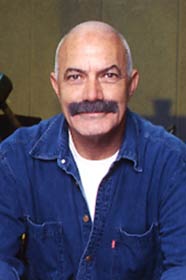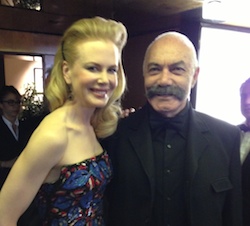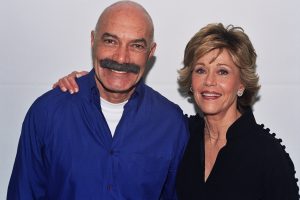With his latest action-thriller, “Haywire,” director Steven Soderbergh once again tackles a popular movie genre, adding elements that subtly turn the audience’s expectations on their heads. Combining intrigue and suspense, complex characters and glamorous international settings with bone-crunching action, real-world special ops techniques and a charismatic female hero, the director has reinvented the espionage thriller.
“I am a fan of the early James Bond films,” says Soderbergh. “’From Russia With Love’ may be my favorite. In those movies, you get to know who the characters are instead of just what they do. In more recent espionage-action films, there isn’t a lot of time spent developing the supporting characters. I wanted to revisit the early Bond films. Their ratio of story to action is very much like ours.”
Soderbergh’s longtime filmmaking partner, producer Gregory Jacobs, knew that the director had been interested in exploring the genre for some time. “The idea had a lot of appeal for him,” says Jacobs. “He had always wanted to make a true action movie. We’d been thinking about it for a while when we contacted Lem Dobbs, who had written two films, The Limey and Kafka, for us in the past.”
The resulting script is less a tribute to previous films than a complete reworking with a unique twist typical of Soderbergh. “I always wondered why the main character in these films had to be a guy,” he says. “I find there’s an added level of drama and conflict whenever you have a female protagonist. There’s always the additional layer of operating in a world run by men. It’s another wall that they have to go through. In addition to this being a story about espionage and covert operatives, it’s also about the relationships our lead character has with the various male characters and how she functions in a male-dominated world.”
There is nothing overtly feminist in the script. “It’s rarely brought up that Mallory Kane is a woman. It’s just a fact, and people make assumptions about her that turn out not to be true.”
“It adds a layer of guilt,” he continues. “And I think the reason Hitchcock movies are still watchable is not just because of his technique, but because, at their core, they are all about guilt. There is always somebody at the center of the movie that has something they don’t want known. I wanted to have some of that so she wasn’t just a ‘goody-goody’ the whole way through. As it turns out, that decision probably saved her life. But when she does it, you’re wondering why.”
Soderbergh found his muse for this film in an unexpected venue. He had seen mixed martial arts champion Gina Carano fight, and became intrigued by the idea of featuring her in a movie. A thrilling and demanding combination of fighting styles including Muay Thai, Karate, Jiu Jitsu, Judo, wrestling, boxing, Sambo, kickboxing and Kung Fu, mixed martial arts gave Carano the ability to perform the kind of deadly hand-to-hand combat the director envisioned for his film.
“I knew there had to be a woman other than Angelina Jolie who could run around with a gun,” he says. “After I saw a couple of Gina’s fights, I viewed some interviews with her that showed her as a really genuine, very grounded person. It occurred to me that I could combine my desire to make a realistic espionage film with her expertise. But first I had to meet with her and see whether or not it would appeal to her.”
After an initial meeting, the filmmakers began to tailor the part of Mallory Kane for Carano. “We knew she’d be able do most of her own stunts,” says Jacobs. “That was key, because Steven was adamant about not wanting to do a lot of wire work. He didn’t want the audience to feel the action elements were so acrobatic or dangerous that a human couldn’t possibly be doing them. The wonderful thing about filming with Gina was that there were no special effects in the fights. Everything was real.”
That fact was critical to Soderbergh’s vision of the film as a realistic adventure, which also meant he eschewed the kind of futuristic technology that is a staple of many films in the genre. “In many ways, we wanted to go against the grain of the way action is usually shot,” he says. “I really wanted to take advantage of the fact that we had people who really could perform these actions and not be indulging in the kind of trickery that is sometimes necessary in a movie. I didn’t want anybody doing anything that wasn’t physically possible. And I didn’t want to rely on technology that didn’t exist.”
“If two people are in a room fighting, it has to end at a certain point because you’ll run out of things that are plausible,” he says. “This was my take on that kind of movie. Haywire is more of a drama with action in it than it is a wall-to-wall action movie.”










